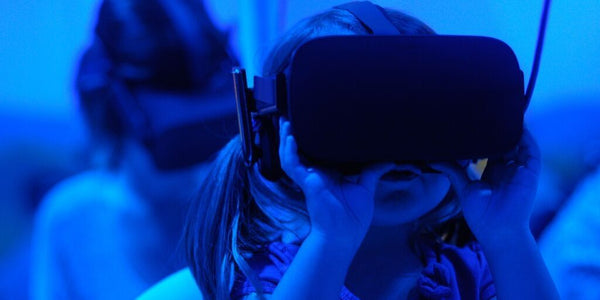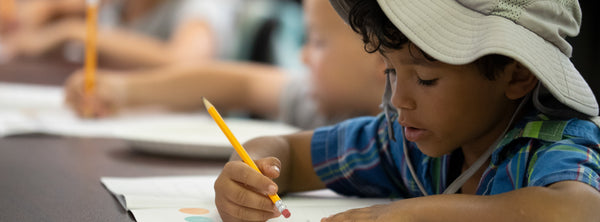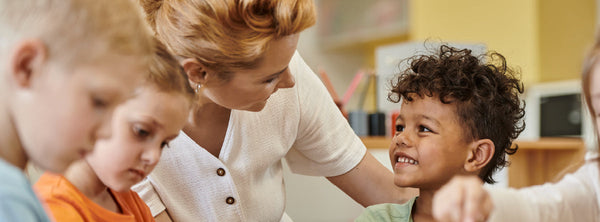
Coding, Programming and Virtual Reality
We are living in the age of technology. Every day, new developments, computational discoveries and technological advances flood our headlines and drive our world into unknown territories. Like Edison and Ford’s, the era we live in is defined by what we can do with our newest medium: programming and coding. It’s the greatest advancement the human race can lay claim to. It’s why there’s been such a huge push towards introducing coding earlier and earlier in education. Just like adding woodworking and auto shop to the curriculum, programming skills are quickly becoming the most important addition to our student’s arsenals.
From Scratch to robotics, learners across the globe have been diving into the endless possibilities of programming. But on the surface, teaching programming can be a bit of a hard sell. On the one hand, you have the students who are already interested in coding, the ones who are excited about the endless virtual universe at their fingertips. But what about the other students, the ones who aren’t interested in programming? How do you bring our most important technological development to our youngest minds, those who will push our advancements further than we ever believed possible? By introducing it through a medium they already know and love: video games.
Teaching Coding Through Game Development
Now, I know what you’re thinking. The last thing your students need is more time spent playing video games, and isn’t game development a niche market? How is this going to benefit my students better than the alternatives?
Well, it’s pretty simple. Not only does game development teach programming and CAD (computer-aided design) concepts, but it does it by presenting itself through a medium students are actually interested in.
For our students who were born with tablets and controllers in their hands, there’s something incredibly fulfilling about designing, building and playing your own video game. While on the surface this experience seems to be only focused on video games, it’s actually centered around lifelong STEM skills. From coding and design to analysis and cultural connotation, game development sits in the sweet spot between fun and lifelong skill acquisition.

How Game Design Teaches STEM Skills
By tapping into virtual- and augmented reality, our Game-Based Learning collection offers students unique opportunities to learn, explore and connect.
In Game Design, students learn how to create 3D games and VR/AR experiences. A fun and exciting journey for students and teachers alike, Game Design allows learning environments to create, share and experience the world of games on both desktop and VR.
Using the Blocksmith XR Builder to model objects and scenarios, students bring their creations to life through easy-to-learn software that prepares them for industry-standard tools. These games can be played immediately on desktop, or through a VR headset. It only takes seconds for learners to try out their creations on their favorite device.
While the Game Design curriculum is designed to be easy for educators of any experience level to implement, our partners at STEM Forged also offer fully-managed courses with virtual instructors.
Standards of Learning
A learning solution is only as good as the pillars it’s built upon, the qualities that align with current technological and societal learning initiatives, and video game design is no different. For video game development to provide a robust learning experience, one which learning institutions can accept and monitor, the curriculum needs to adhere to certain degrees of merit and quality. It needs to prove its worth through measurable, widely accepted parameters.
So what sets the star-studded game development learning solutions away from the mediocre ones? It all starts with the fundamentals of the program. According to Ajit Jaokar of Edutopia, every coding program should achieve these four fundamentals:
1. Co-Relate the Teaching of Programming Languages to Real-Life Examples
Mathematician and technologist Conrad Wolfram has an insightful TED talk about teaching mathematics to kids in which he says that math, as taught in schools, looks very different from math as used in practice.
In the real world, math is not necessarily done by mathematicians, but rather by other scientists like geologists, etc. The same ideas apply to the teaching of programming. Programming also does not exist in isolation but rather should be seen in the context of other scientific domains.
Today, with kids who are aware of scientific developments through online sources, it is easier to co-relate programming to other scientific domains as we teach it.
2. Prepare Learners for the Next Wave of Computing
Every decade, computing paradigms change radically. Cloud computing and big data are emphasized today with the Internet of Things and generative AI becoming more common. These ideas are not too hard to grasp, and one could argue that they are actually very interesting to kids. Making kids aware of these real-life changes in computing cycles helps them to think of becoming computing entrepreneurs.
3. Clarify for Students the Economic Value of Learning Programming
It is important to outline the real-life applications for programming to help learners and administration alike understand why kids should learn programming.
For instance, computing is an integral part nearly every industry today. Manufacturing uses complex machinery, CAD, 3D printing, and more to mass-produce products efficiently. Medicine manages patient records, runs tests, and conducts studies and analysis to improve care. Fields such as agriculture, entertainment and emergency services make use of programmed drones to efficiently and safely perform all kinds of tasks.
Almost all modern jobs involve computing skills. This makes coding a foundational skill that will prepare students for any future field they choose.
4. Discuss the Big Picture and Introduce Systems Thinking
In "Learning to Connect the Dots: Developing Children's Systems Literacy", Linda Booth Sweeney emphasizes the value of systems thinking, which is broadly the ability to see the connections between the parts that interact to form a whole.
This ability makes a big difference to all learning but is not applied much in the learning of programming languages. For instance, Arrays and Linked lists perform conceptually the same task, but when they are taught, the connections between them are not always discussed.

Game-Based Learning Programs for Classrooms and Out-Of-School
In Game Design's standards-aligned curriculum, students design 3D games and experiences through a user-friendly, teacher-controlled workspace.
With the Blocksmith XR Builder, learners follow guided curriculum to develop their computer-aided design skills. They build platformer games, animate scenes and playtest each other’s creations. Through this guided learning approach, students build up a base of coding knowledge, including subjects like:
- Data types
- Variables
- Operational values
- Control structures
- Nesting loops
- Compound conditionals
As learners work through the Game Design curriculum, they also learn how to:
- seek out and incorporate user feedback through in-class play testing.
- work existing media into their projects.
- test and revise their creations.
This learn-by-doing approach helps students gain a first-hand account of just what’s possible with programming and coding, opening them to the ever-growing career options available to them. As video games and VR continue to evolve, these early educational experiences are going to set learners leagues ahead of their competition should they choose to pursue a career in coding, programming or video game development.

The Game-Based Learning Experience
Video game development opens coding and programming up to students in a way never possible before. By living in the sweet-spot of student interests and lifelong skill sets, the potential of game development in the classroom is only beginning. But don’t just take our word for it!








